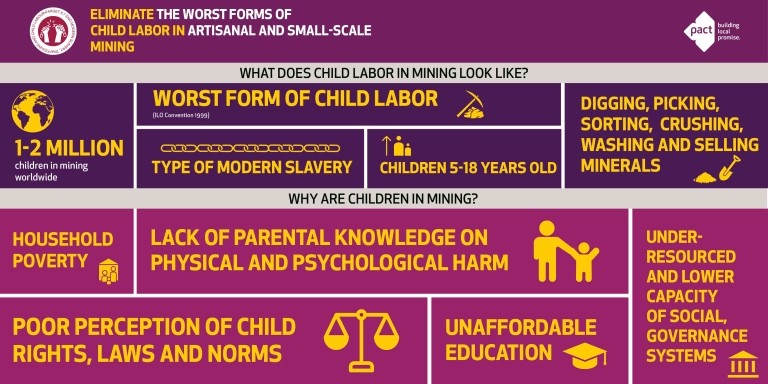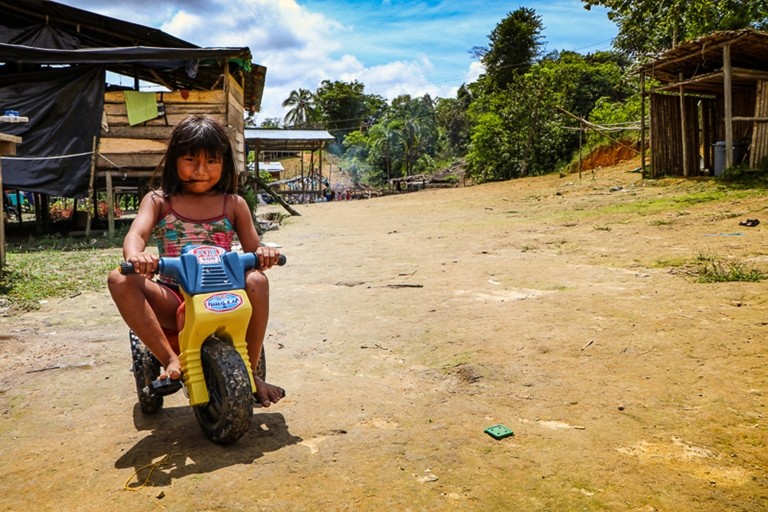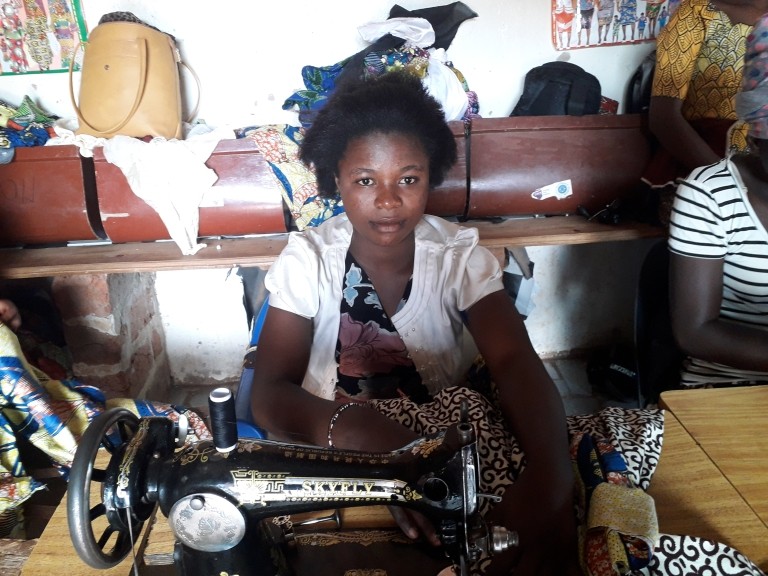Blog
Global approaches to tackling one of the worst forms of child labor

Child labor is an insidious problem that robs children of their childhood. For children engaged in hazardous work, it endangers their physical and mental health and their safety. One of the worst forms of child labor - also a type of modern slavery - occurs in the mining sector. Globally, 1-2 million children work in mining -- digging, sorting, washing and selling minerals that make up products and technologies we use every day. As long as the world demands these products made from critical minerals such as cobalt and tin, people will continue to dig for these minerals, often under dangerous conditions that include child labor.
For more than a decade, Pact has worked to address the root causes of child labor in artisanal and small-scale mining spanning continents and minerals – including tin, tantalum, tungsten, copper, cobalt, coal and gold. Using a systemic, integrated approach tailored to each community, we begin by studying factors that are contributing to child labor. Then, we work in partnership with communities, governments, the private sector and miners themselves to address these root causes. Along the way, we build the capacity of local institutions, including schools, health and social service agencies and child protection organizations.
In Colombia an estimated 5,000 children are engaged in mining. Pact began working in 2013 in gold and coal mining areas to strategically reduce child labor and improve health and safety in ASM. Today, in the country’s Bajo Cauca and South Bolivar regions, where gold mining is a critical livelihood, Pact leads the Pilares project to improve civil society’s capacity to better understand and address child labor and promote acceptable conditions of work in the artisanal and small-scale gold mining sector. Through a collective impact approach in partnership with the Alliance for Responsible Mining, Pact enables a flourishing system of interconnected civil society actors. We’ve worked with more than 50 CSOs, including ones focused on miners, women, afro-descendants, indigenous, and youth, reaching out to more than 1,000 children, CSO members, and government officials.

In the Democratic Republic of Congo, where an estimated 40,000 children work in the cobalt and copper sectors, we’re raising awareness about the dangers of child labor, increasing families’ economic stability and improving enforcement of child labor bans. Our efforts have reduced child labor at mine sites where we work by more than 90 percent. Through the Watato Inje Ya Mungoti program, or Children Out of Mining, we use a holistic approach to change norms and attitudes about child labor in mining and address its root causes. This includes an apprenticeship program for older children, designed to give them a viable, safer and more stable way to earn income so that they can leave mining work behind.
We’ve already engaged 300,000 community members in group discussions and workshops on child rights and norms. Through one-on-one and group discussions at mine sites, we’ve educated more than 34,000 children on their rights. We've also worked with industry, training 150 small-scale mining companies in responsible business and due diligence tools. To address economic stability, we’ve enrolled more than 1,600 households in microfinance groups to save money, grow livelihoods, start businesses and support family education, and trained more than 600 youth in alternative livelihoods such as mechanics, tailoring, hairdressing, IT, welding and carpentry. Youth like Eliane and Dimercia.
Eliane is 18 years old and one of 10 children. When she was 10, Eliane began collecting minerals at the quarry to contribute money for the family's food and toiletries. She’d been working in the mines for seven years when the neighborhood committee members told her that children didn’t belong in the mines and learning provided safer opportunities for her and other children. She left the quarry in 2020 and was selected for a tailoring apprenticeship through Pact’s program. Today, she’s working and saving the majority of her earnings. To contribute to the fight against Covid-19, she made 300 masks using her newly acquired tailoring skills. Her dream for the future is to have a workshop equipped with many sewing machines that will allow her to teach sewing to other children who have left the quarries in her community.

Dimercia is 16 years old and is one of eight children in her family. At the age of 12, Dimercia went to the quarry to earn enough to buy clothes and sometimes food. She decided to leave mining in 2019 because the work was hard and dangerous. She realized that she did not belong in the mines but had left school in 6th grade and knew she needed an alternative education. When she was selected for the vocational education program through Pact, she chose tailoring as her trade. Today, Dimercia is a tailor and uses her earnings contributes to the family’s health care, education, water and electricity bills and other necessities.
Pact’s programming and its results show there are solutions to the persistent problem of child labor in mining. By creating protective environments for children and reducing tolerance of child mining through mobilizing communities, our programs have markedly reduced child labor at mine sites where we work.
While these gains are important to acknowledge and celebrate, we know there is still a lot of work to be done. Improving educational opportunities, social protection systems and policies, and knowledge of the dangers of child labor to children and communities will not prevail without addressing local economic diversification in mining-predominant areas. As the economic impact of Covid-19 continues to hit mining communities hard, we need to double down on our efforts to scale what works. With sustained efforts and cooperation and partnerships among actors from across development – from local government and civil society to multinational bodies like the United Nations, World Bank, Organization for Economic Cooperation and Development, and the World Economic Forum, among others – we can end child labor in all its forms.